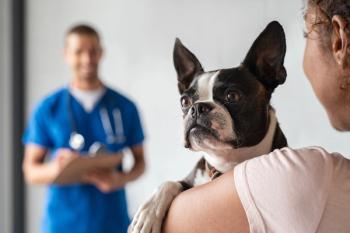
Talk with your hands to help clients understand
Providing visual cues can help you become a better communicator.
A new study proves that talking with your hands can trigger mental images that help solve complex problems relating to spatial visualization. It’s an important skill for anyone working in a veterinary practice. For example, how would you describe the physiological actions behind canine osteoarthritis to a client? According to the study, using your hands might be the best method.
Spatial visualization is the ability to mentally rotate or move an object to a different position or view. According to researchers, hand gestures are spontaneous and don’t need to be taught, but they can improve spatial visualization. From Galileo and Einstein to da Vinci and Picasso, influential scientific discoveries and artistic masterpieces might never have been achieved without extraordinary spatial visualization skills, researchers say.
The study’s findings appear in the February issue of the Journal of Experimental Psychology: General. Three studies examined the relationship between hand gestures and spatial visualization using various mental rotation tests:
> In the first experiment, 132 students at the University of Birmingham were tested individually. Using a hidden camera, researchers recorded the number of hand gestures and found that spontaneous gestures increased as the problems became more difficult.
> A second experiment divided 66 students into three groups. One group was encouraged to use gestures, the second was given no instructions, and the third had to sit on their hands to prevent participants from gesturing. The gesture-encouraged group performed significantly better on the tests than the other groups and also fared better on later tests where all of the participants had to sit on their hands, showing that the benefits of gestures may become internalized.
Hand gestures may help a person keep track of an object in the mind as it is rotated to a new position. Since our hands are used so much in daily life to manipulate objects, gestures also may provide additional feedback and visual cues by simulating how an object would move if the hand were holding it. So whether you’re talking to a client about a health issue or explaining a surgical procedure to a team member, get those hands moving.
Newsletter
From exam room tips to practice management insights, get trusted veterinary news delivered straight to your inbox—subscribe to dvm360.






